Mikko A. Uusitalo
Downlink Power Control based UE-Sided Initial Access for Tactical 5G NR
May 22, 2024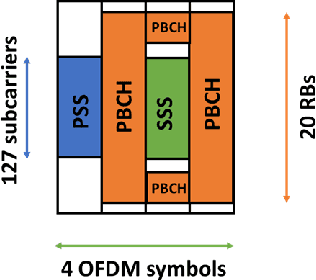
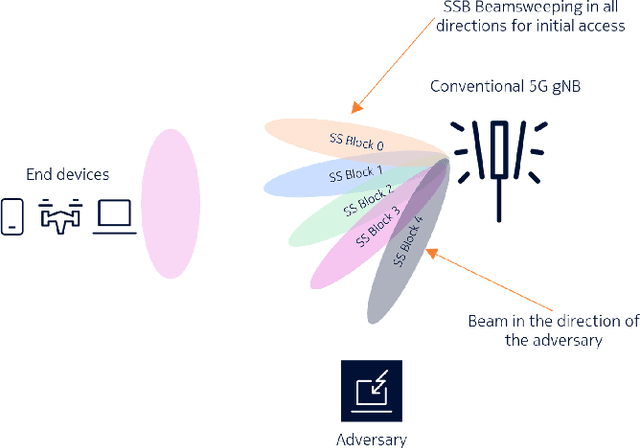
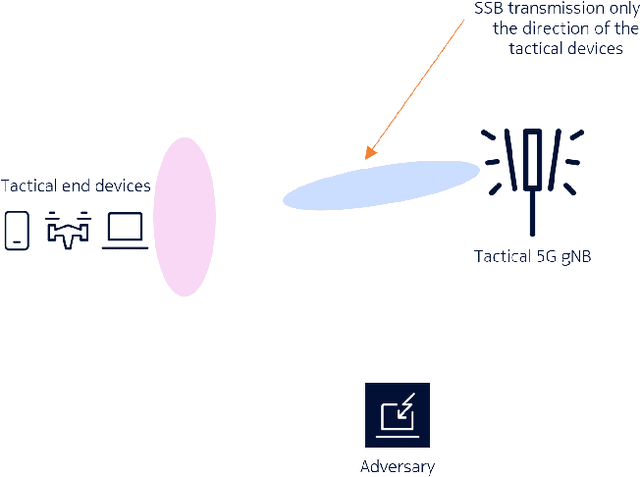
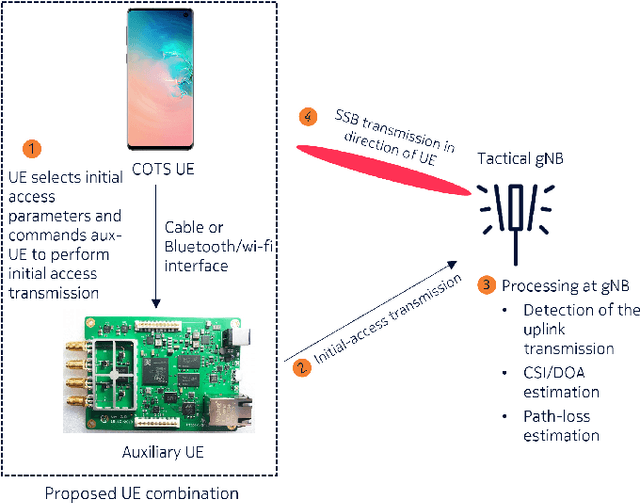
Abstract:Communication technologies play a crucial role in battlefields. They are an inalienable part of any tactical response, whether at the battlefront or inland. Such scenarios require that the communication technologies be versatile, scalable, cost-effective, and stealthy. While multiple studies and past products have tried to address these requirements, none of them have been able to solve all the four challenges simultaneously. Hence, in this paper, we propose a tactical solution that is based on the versatile, scalable, and cost effective 5G NR system. Our focus is on the initial-access phase which is subject to a high probability of detection by an eavesdropper. To address this issue, we propose some modifications to how the UE performs initial access that lower the probability of detection while not affecting standards compliance and not requiring any modifications to the user equipment (UE) chipset implementation. Further, we demonstrate that with a simple downlink power control algorithm, we reduce the probability of detection at an eavesdropper. The result is a 5G NR based initial-access method that improves stealthiness when compared with a vanilla 5G NR implementation.
Demystifying 5G NR Downlink Synchronization for Tactical Networks
May 21, 2024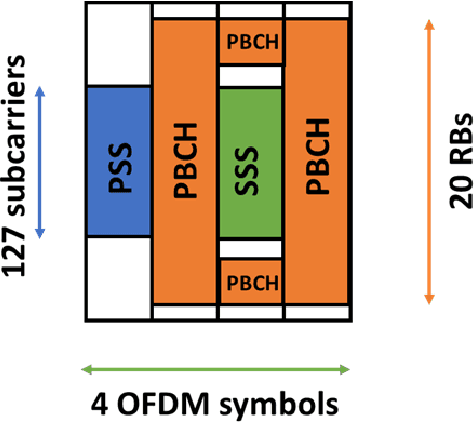
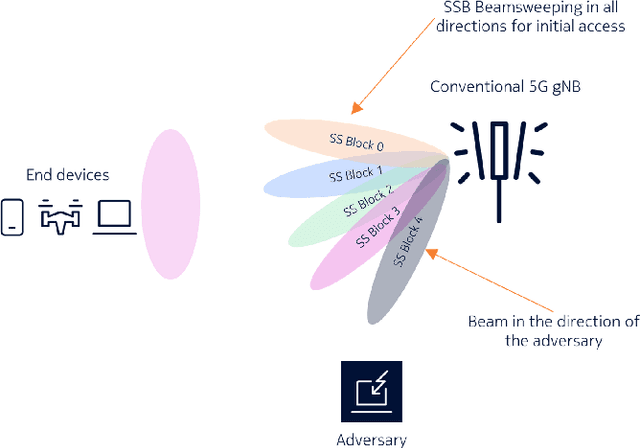
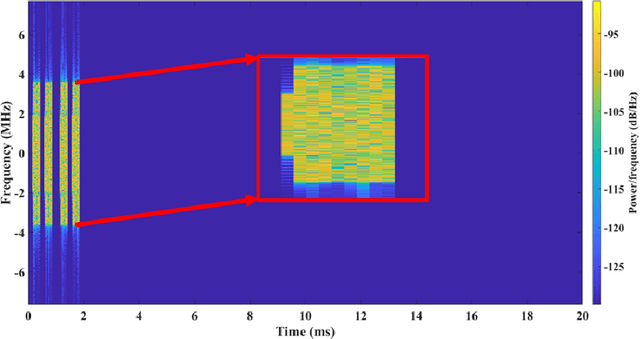
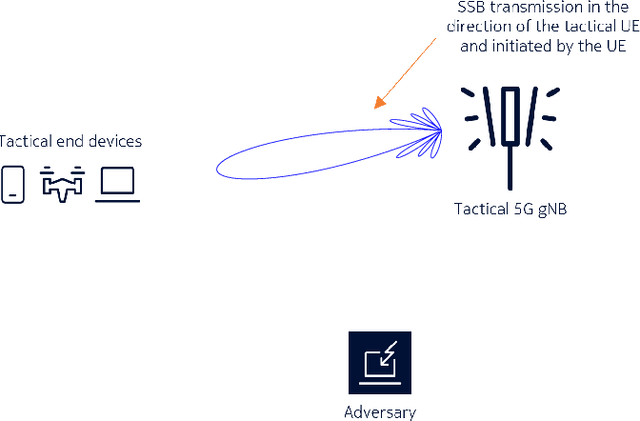
Abstract:5G NR is touted to be an attractive candidate for tactical networks owing to its versatility, scalability, and low cost. However, tactical networks need to be stealthy, where an adversary is not able to detect or intercept the tactical communication. In this paper, we investigate the stealthiness of 5G NR by looking at the probability with which an adversary that monitors the downlink synchronization signals can detect the presence of the network. We simulate a single-cell single-eavesdropper scenario and evaluate the probability with which the eavesdropper can detect the synchronization signal block when using either a correlator or an energy detector. We show that this probability is close to $ 100 $% suggesting that 5G out-of-the-box is not suitable for a tactical network. We then propose methods that lower this value without affecting the performance of a legitimate tactical UE.
On the IRS Deployment in Smart Factories Considering Blockage Effects: Collocated or Distributed?
Nov 14, 2023Abstract:In this article, we study the collocated and distributed deployment of intelligent reflecting surfaces (IRS) for a fixed total number of IRS elements to support enhanced mobile broadband (eMBB) and ultra-reliable low-latency communication (URLLC) services inside a factory. We build a channel model that incorporates the line-of-sight (LOS) probability and power loss of each transmission path, and propose three metrics, namely, the expected received signal-to-noise ratio (SNR), expected finite-blocklength (FB) capacity, and expected outage probability, where the expectation is taken over the probability distributions of interior blockages and channel fading. The expected received SNR and expected FB capacity for extremely high blockage densities are derived in closed-form as functions of the amount and height of IRSs and the density, size, and penetration loss of blockages, which are verified by Monte Carlo simulations. Results show that deploying IRSs vertically higher leads to higher expected received SNR and expected FB capacity. By analysing the average/minimum/maximum of the three metrics versus the number of IRSs, we find that for high blockage densities, both eMBB and URLLC services benefit from distributed deployment; and for low blockage densities, URLLC services benefit from distributed deployment while eMBB services see limited difference between collocated and distributed deployment.
HybridDeepRx: Deep Learning Receiver for High-EVM Signals
Jun 30, 2021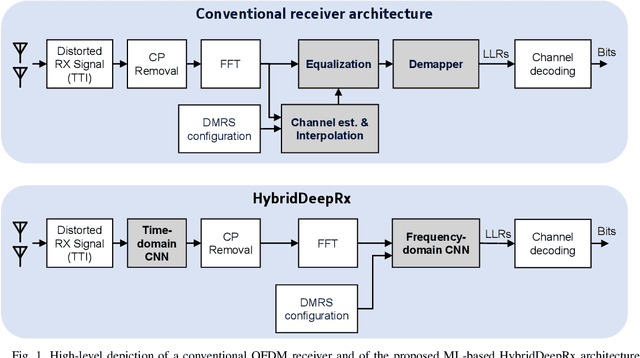
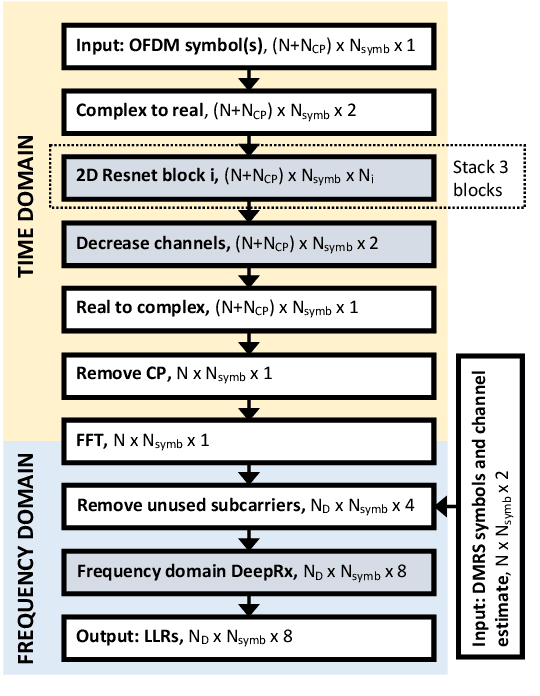
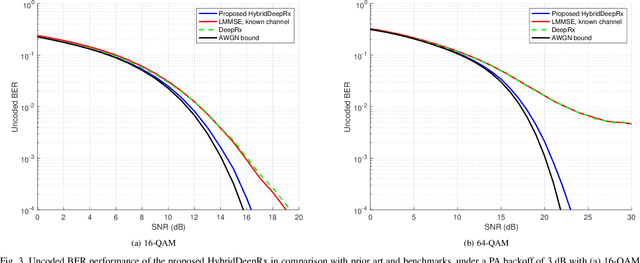
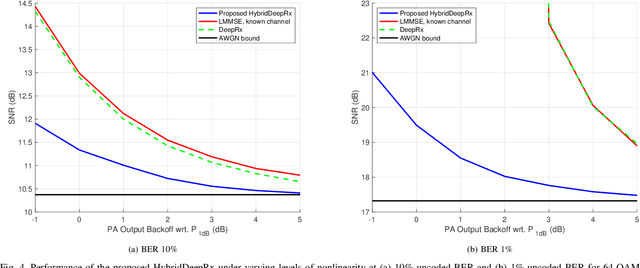
Abstract:In this paper, we propose a machine learning (ML) based physical layer receiver solution for demodulating OFDM signals that are subject to a high level of nonlinear distortion. Specifically, a novel deep learning based convolutional neural network receiver is devised, containing layers in both time- and frequency domains, allowing to demodulate and decode the transmitted bits reliably despite the high error vector magnitude (EVM) in the transmit signal. Extensive set of numerical results is provided, in the context of 5G NR uplink incorporating also measured terminal power amplifier characteristics. The obtained results show that the proposed receiver system is able to clearly outperform classical linear receivers as well as existing ML receiver approaches, especially when the EVM is high in comparison with modulation order. The proposed ML receiver can thus facilitate pushing the terminal power amplifier (PA) systems deeper into saturation, and thereon improve the terminal power-efficiency, radiated power and network coverage.
 Add to Chrome
Add to Chrome Add to Firefox
Add to Firefox Add to Edge
Add to Edge